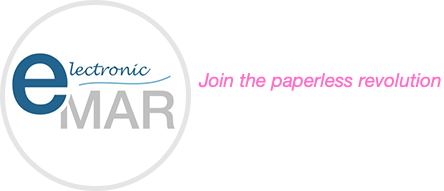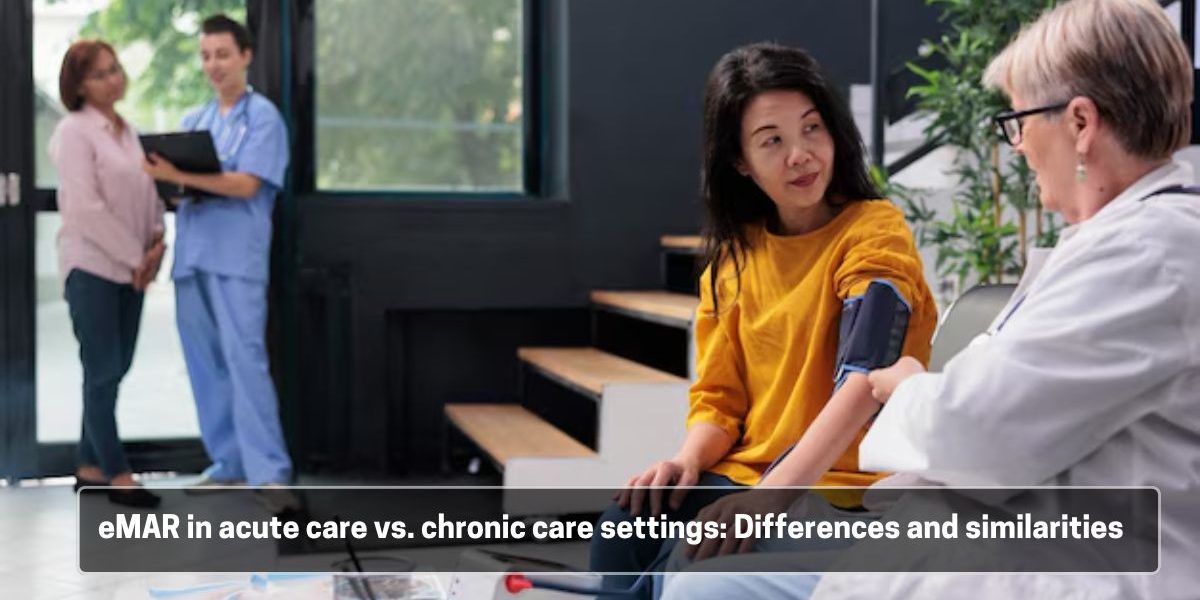Both acute and chronic care environments have benefited significantly from electronic MAR , which helps to reduce medication errors, improve patient safety, and ensure regulatory compliance. However, the specific needs and workflows in these two types of care settings result in different uses and integrations of eMAR systems. Understanding these differences, as well as the core similarities, is crucial for optimising the use of eMAR in healthcare. In this article, we will explore the key differences and similarities between eMAR software usage in acute and chronic care settings.
Differences
- Purpose and use cases
The primary difference between eMAR in acute and chronic care settings lies in its purpose and how it is utilised. In acute care settings, such as hospitals and emergency departments, eMAR is designed to manage rapidly changing patient conditions. For example, a patient in an acute care setting might require frequent adjustments to their medication regimen based on their immediate health status, making it essential for eMAR systems to be highly responsive.
In contrast, chronic care settings, such as long-term care facilities, involve managing long-term treatment plans. eMAR in these settings is tailored to handle consistent medication regimens and regular monitoring over extended periods. Patients in chronic care often require ongoing medication for conditions such as diabetes, hypertension, or heart disease, where the focus is on maintaining adherence to a stable medication schedule. The eMAR system in this context ensures that medications are administered consistently and that any necessary adjustments are made in response to regular patient assessments.
- Workflow integration
In acute care, the workflow is fast-paced, requiring the eMAR system to be highly responsive and integrated with other hospital systems, such as Electronic Health Records (EHR), pharmacy, and laboratory systems. This integration is crucial for quick decision-making.
In chronic care settings, the workflow is generally more stable and predictable. Here, eMAR systems focus on ensuring adherence to long-term treatment plans and managing regular follow-up schedules. Integration with outpatient services, home healthcare systems, and community care networks is more prevalent.
- Alerts and notifications
Alerts and notifications generated by eMAR systems also differ significantly between acute and chronic care settings. In acute care, eMAR systems often produce more frequent and urgent alerts due to the critical nature of patient conditions. For example, the system might generate an alert if a patient’s medication needs to be administered immediately or if there is a potentially dangerous interaction between drugs. These alerts are designed to support immediate responses and prevent potential medication errors in high-stakes environments.
In chronic care settings, the alerts are generally less urgent and focus more on routine medication adherence, potential long-term drug interactions, and scheduled medication reviews.
5. Data entry and documentation
Data entry and documentation processes in eMAR systems also vary between acute and chronic care settings. In acute care, documentation needs to be detailed and swift, with a strong emphasis on real-time data entry to capture the current state of the patient. This is essential for keeping up with the rapid pace of patient care and ensuring that all healthcare providers have up-to-date information.
In chronic care settings, data entry can be more reflective, focusing on trends, medication compliance, and ongoing assessments. The documentation in these settings often involves tracking the patient’s progress over time, monitoring the effectiveness of the treatment plan, and making gradual adjustments based on the patient’s evolving needs.
Despite the differences in how eMAR is used in acute and chronic care settings, there are several core similarities that underline its importance in both environments.
- Core functionality
Both acute and chronic care settings use eMAR systems to accurately record medication administration, ensure compliance with medication orders, and maintain a clear audit trail. The fundamental purpose of eMAR—improving medication safety and ensuring accurate documentation—remains consistent across both types of care.
- Integration with other systems
In both settings, eMAR systems are integrated with EHRs, pharmacy management systems, and other healthcare information systems. This integration ensures a seamless flow of information. It helps healthcare providers to access the data they need to make informed decisions and deliver effective care.
- Safety and compliance
Ensuring patient safety and regulatory compliance is a critical function of eMAR systems in both acute and chronic care. eMAR helps reduce medication errors, supports adherence to protocols, and ensures proper documentation.
- User access and training
Both acute and chronic care settings require staff to be well-trained in using eMAR systems. User access is carefully controlled and monitored to protect patient data and ensure that only authorised personnel can administer medications.
- Patient-centred care
Finally, eMAR systems support patient-centred care in both settings by ensuring that medications are administered accurately and on time.
By understanding these differences and similarities, healthcare providers can better leverage eMAR technology to meet the unique needs of their patients.







